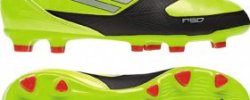 For many people available, the iconic Nike Mercurial series evokes some form of vivid thoughts from huge games or occasions of the last few years. It all were only available in 1996, when Nike partnered with the world’s many decorated intercontinental part, the Brasilian nationwide Team. Into the eyes of swoosh, it had been time for you create a fresh style of boot worthy of their quality of play. Ronaldo, the squad’s young much talked about striker, was the special one selected given that muse. Regarding pitch, he had been patient—stalking, waiting around for suitable minute. Then, whenever chance arose, he’d hit, accelerating towards basketball with velocity the online game had never seen before. With the goal inside the sights, Ronaldo would improvement in nature. He was, in short, mercurial.
For many people available, the iconic Nike Mercurial series evokes some form of vivid thoughts from huge games or occasions of the last few years. It all were only available in 1996, when Nike partnered with the world’s many decorated intercontinental part, the Brasilian nationwide Team. Into the eyes of swoosh, it had been time for you create a fresh style of boot worthy of their quality of play. Ronaldo, the squad’s young much talked about striker, was the special one selected given that muse. Regarding pitch, he had been patient—stalking, waiting around for suitable minute. Then, whenever chance arose, he’d hit, accelerating towards basketball with velocity the online game had never seen before. With the goal inside the sights, Ronaldo would improvement in nature. He was, in short, mercurial.
To create a boot suitable for Ronaldo’s explosive style, Nike designers seemed into track. Early principles included a dissembled track spike hitched to a Nike Tiempo upper, which illustrated the objective of unmatched weight loss in a football boot. To satisfy the task, the team of designers bucked longstanding styles by eschewing kangaroo fabric and employing a synthetic kangaroo replacement, KNG-100. The next significant breakthrough had been lowering plate thickness through the business standard 3 mm to a game-changing 1.75 mm. Luca Bolpagni, from Nike’s item production Centre in Montebelluna, Italy said for the innovations, “Everything ended up being shocking during the time. The appearance, materials, people performedn’t understand what to consider. It Absolutely Was a interesting minute.”
 Nike established the Mercurial silo in 1998, forever changing the look and feel of overall performance football boots and the following is our look at the reputation for the show and how this has developed.
Nike established the Mercurial silo in 1998, forever changing the look and feel of overall performance football boots and the following is our look at the reputation for the show and how this has developed.
Just how can a track surge inform a boot? At first referred to as Tiempo Ultra Light, together with Ronaldo Ultra Speed, the Nike Mercurial replied that question. Designed with Ronaldo’s startling velocity in mind, what started out as a lightweight addition towards Tiempo series accelerated past anything made before and forged its path as a “speed” boot: the Mercurial.
In tune because of the remarkable Brasilian striker’s ideas, the Mercurial ended up being designed for rate. A thinner dish, built to resist the impact of 90 minutes of high-speed play, paid down fat. The KNG-100 synthetic upper (which behaved like leather but performedn’t absorb water like all-natural textiles) more trimmed body weight. Thin and less heavy than old-fashioned leather-based, KNG-100 smashed the stigma of synthetics and changed how soccer footwear had been made. A sticky layer for ultimate baseball control was sourced, properly, from framework of racing motorbikes and ended up being honed to do business with the shoe’s special top. The Mercurial proved a great canvas for shade making a visible impact in blue and yellow on Ronaldo’s legs on football’s biggest phase in the summer of 1998.
Weighing simply 230 grams, the Nike complement Mercurial proved that Nike’s experiment with lightweight baseball boots performedn’t end with all the initial Nike Mercurial. When it comes to second generation, the boot’s development became part of Nike’s Alpha Project, a number of footwear symbolized by five dots and emblematic of excellence in overall performance. Whilst complement Mercurial retained the same last since the original, it absolutely was given its distinct visual. Especially, on Ronaldo’s signature complement Mercurial R9, the KNG-100 ended up being dressed in a metallic copper that faded to black toward the toe panel. The Alpha Project age, such as the Mercurial R9, Air Zoom Italia, complement Mercurial, and Air Zoom Mercurial (an unusual little bit of the Mercurial story integrating full-length Nike Zoom Air padding) confirmed that fast could easily get faster.
The Alpha Project age, such as the Mercurial R9, Air Zoom Italia, complement Mercurial, and Air Zoom Mercurial (an unusual little bit of the Mercurial story integrating full-length Nike Zoom Air padding) confirmed that fast could easily get faster.
As the initial Nike Mercurial borrowed created language from an Italian motorcycle (especially for its ball-control finish), the Nike Mercurial Vapor received determination from the fastest production automobiles available. If the preliminary idea was to develop a track increase the pitch, the Mercurial Vapor is made to sustain a 90-minute sprint and deliver the perfect foot-to-ground feel for quick people.
Over the course of development, Nike analyzed each element of the Mercurial Vapor. From glue to stitching bond was considered to eliminate excess weight. However, sustaining rate for a complete match also needed convenience. A unique anatomical last produced across the all-natural shape of the foot at a lower price pressure introduced the ball player nearer to the boot’s dish. The revolutionary healthy reduced fat, added comfort, and, in a testament toward Mercurial’s DNA, enhanced speed.
With constantantly evolving styles for a faster plus comfortable boot, it didn’t stop there. The evolutions brought the search for the fastest boot to the women’s online game. American performers Mia Hamm (whom led the U.S. Women’s group to victory in 2003 and a gold in 2004) and Brandi Chastain wore the Mercurial Vapor. Their ideas generated the 2003 Nike Women’s Mercurial Vapor—a boot built to the exacting specifications of this female foot.
When it comes to Nike Mercurial Vapor II rate was a given—the body weight remained the same—but improvements to comfort were needed to understand the aim of a perfect foot-to-ground feel. Changes to match included an enlarged heel loss for additional ankle cushioning. The group Red edition, the main initial launch rollout, indicated that strong color had been nevertheless part of the Mercurial Vapor’s aesthetic, however it was Ronaldo’s signature silver and black colored the Mercurial Vapor II R9 that's many recalled. Fittingly, the audacious design endured on your toes of emerging celebrity Cristiano Ronaldo (whom began putting on the Mercurial in his early-teens) in a fluid passing of the torch.




crash juegos online









